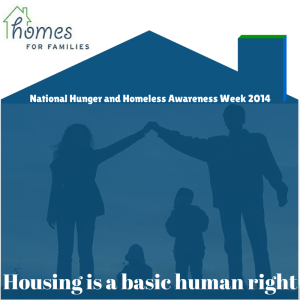An Act promoting housing stability and homelessness prevention in Massachusetts (S. 874 & H.1436)
COVID-19 has further exacerbated the housing crisis by increasing the threat of evictions for low-income families. Without an eviction moratorium in place, there is no telling how many evictions would have been filed, but estimates are in the hundreds of thousands, and maybe even a million. Now that the eviction moratorium has expired, evictions are about to come roaring back because tenants have no protections and have not fully recovered from the pandemic.
While tenants may try to fight their eviction case in court, fewer than 10% of tenants are able to obtain legal representation. In contrast, 80% of landlords are represented by legal counsel. This imbalance favors landlords and often results in unjust evictions. Most evictions happen very quickly and with complicated procedural rules, which means a majority of these tenants are forced to navigate this complex process on their own. Landlords often take advantage of this and file meritless eviction cases, knowing that they are more likely to win in court.

- Source: Massachusetts Trial Court Department, FY 2020
- Published visual of legal representation imbalance by CHAPA
WHAT WILL A RIGHT TO COUNSEL BILL DO?
Senator DiDomenico, along with Rep. Rogers, and Rep. Day have filed a bill in both the House and the Senate that will establish a right to counsel for eviction cases. Bills S.874 and H.1436 will ensure low-income households have access to resources, including full legal representation in eviction cases, which will promote housing stability and prevent homelessness. This will be executed with a pilot Right to Counsel program.
How does the Right to Counsel Program Work?
The Right to Counsel Program is administered by the Massachusetts Legal Assistance Corporation (MLAC). MLAC provides free and full legal assistance and representation with state funding by contracting not-for-profit organizations. This may include legal advice, advocacy, and assistance associated with representation, including the filing of a notice of appearance on behalf of the eligible individual. To qualify, individuals must receive certain public assistance benefits, have an after-tax income that is 80% or less of the area median income (AMI), or be unable to pay for legal representation without impacting life necessities.
The MLAC will provide a form that will notify individuals of their eligibility for a right to legal counsel in eviction proceedings. However, if an eligible tenant or occupant does not receive an approved form or the legal counsel does not have time to file a response, legal assistance must be obtained for the lawsuit to continue. This ensures that tenants and owner-occupants will not be forced to default and accept eviction due to the limited timeline. Furthermore, MLAC will put together an advisory committee that consists of low-income tenants, community-based organizations, statewide advocacy organizations, municipal officials, and others committed to housing stability.
This is an emergency law and is necessary for public safety in preventing homelessness, overcrowding, and displacement; therefore, this act will not be deferred and will be put into effect immediately if passed.
BRIEF HISTORY OF BILL
In 2021, both Connecticut and Washington passed right to counsel bills for eviction cases, and cities like New York City, Louisville, Cleveland, and Los Angeles have invested in tenant representation and implemented RTC programs successfully. According to Cleveland’s RTC interim report, 93% of their RTC clients who faced eviction were able to avoid displacement, and other cities with similar programs have a 75 to 85% success rate. New York City reports that their eviction rate declined about 30%, and 84% of the represented tenants were able to win their eviction cases in a 2019 report. HFF believes a RTC program will ensure families in Massachusetts will have long-term stable housing through the pandemic and after.
Eviction Help
If you are currently fighting an eviction without legal assistance, please refer to Greater Boston Legal Services’ Massachusetts Defense for Eviction (MADE) for self-guided eviction help HERE. This completely free guided interview is for Massachusetts tenants who are being evicted. It is estimated to take between 25 and 90 minutes for a typical tenant to use on their own. It will help you make sure that you respond to your landlord’s eviction case correctly.
HOW CAN YOU HELP?
- Write/call your elected officials.
You can find your State Representative and Senator HERE. These elected officials work for you, and it is immensely important that they hear from their constituents about what you want them to do as your representative. Here is a script you can use to email or call your representatives:
Dear Representative/Senator [NAME],
My name is [NAME] and I am Emailing on behalf of [ORGANIZATION]. I live in your district and wanted to talk to you about a piece of legislation that is crucial to helping end family homelessness in Massachusetts. This bill is incredibly important to me and I would really appreciate your advocacy around, especially by co-sponsoring the bill.
On any given night in our state, 18,471 people experience homelessness, a number that has more than doubled since 1990, and over 12,000 of them are in families with children. Since 2007, no other State in America has seen a larger increase in family homelessness. It doesn’t have to be this way! There are concrete laws that can be passed that will drastically transform Massachusetts into a State where homelessness really is brief, rare, and non-recurring.
As your constituent, here is the bill I’d like you to co-sponsor and support: HD.1436/S.874: An Act promoting housing stability and homelessness prevention in Massachusetts. This bill will ensure low-income people have access to resources, including full legal representation in eviction cases.
Sincerely, [NAME]
2. Use social media!
Follow HFF on Twitter and Facebook to learn more about RTC. Tweet directly at your Representatives and Senators!
View Factsheet Draft: https://www.canva.com/design/DAEhnbF8D0g/7p6DtsUr8FtmMrTto4bogw/edit
For more information, visit The Massachusetts Right to Counsel Coalition website:
ACLU Tenant’s Right to Counsel Article:
Boston Bar Association RTC Report

















